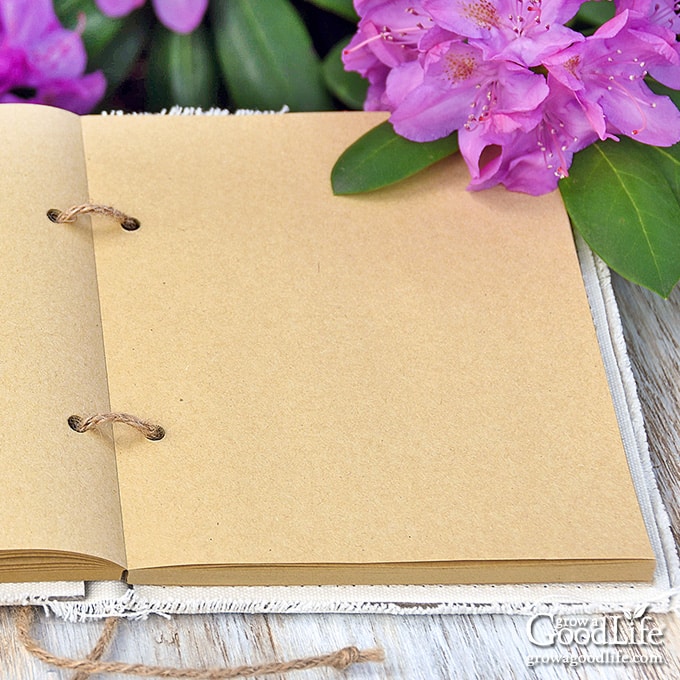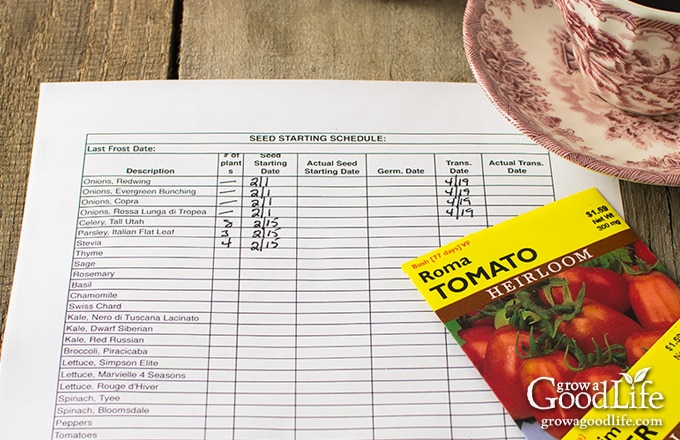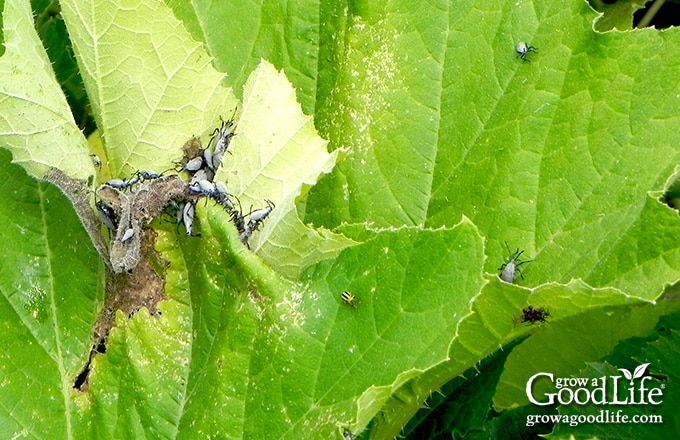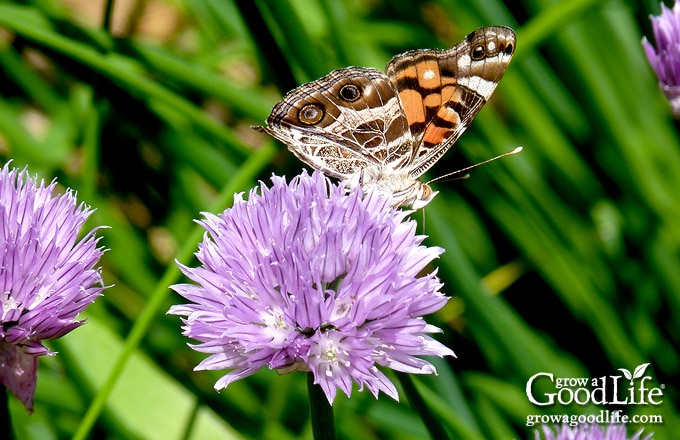How to Keep a Gardening Journal
This post may contain affiliate links, which means that I may receive a commission if you make a purchase using these links. As an Amazon Associate I earn from qualifying purchases.
Keeping a gardening journal is a great way to learn and grow from your experiences throughout the season. Discover the benefits of garden journaling and learn how to start your own.

A gardening journal is a great way to track your progress, keep track of your plant’s growth, and make notes on the successes and challenges of your vegetable garden. From recording planting dates to noting pest problems, keeping a planting notebook can help you optimize your growing skills leading to a more successful garden and bountiful harvest.
Whether it’s just a few sketches of your garden layout or a detailed daily routine complete with tips, tricks, photos, and seeds, anyone can benefit from keeping a garden journal. So start keeping a planting journal today and take your gardening game to the next level.
Learn what a garden journal is, how to use it, and tips for keeping a planting record that will be useful for years to come.
What is a Gardening Journal?
A gardening journal is a personal record of your gardening experiences throughout the growing season. As with all journals, what you choose to record in your garden journal will be unique to you.
It doesn’t have to be complex. It can be as simple as recording your plant’s names, harvest times, or a simple record of the weather. Once you begin, you’ll learn to add things that have meaning to you.
You can include anything in your gardening journal that you find interesting or useful. For example, you can record all your gardening successes and failures, such as the knowledge that your sunflowers grew better this year in the backyard versus the front or a record of squash plants that didn’t do well and need to be moved next year.
A garden notebook can organize many things, including layout maps to keep track of what’s planted, planting times, harvest dates, maintenance schedule, soil quality, and fertilizing needs.
It can help you keep information about frost dates and weather patterns, which can be as unique as your own backyard. In addition, you can choose to record many garden-related events, ideas, tips, and tricks that you can easily access at any time..
You can use a gardening journal to record your experiences, types of plants, and gardening techniques. By keeping notes of this information, you’ll be able to look at your gardening journal and learn from it for many years.
Why Keep a Garden Journal?
A gardening journal is a written account of everything you find interesting and helpful in your garden, from day to day and year to year. It will help you keep track of valuable information that will help you learn as you grow your garden.
There are many reasons to keep a garden planner, but the main reason to start one is so that you’ll have a place to organize all of your garden layout sketches, seed inventory lists, seed starting charts, empty seed packets, and gardening notes and tips.
Keeping a gardening journal is a fun and fulfilling activity that can also be very beneficial. A gardening journal can be one of the most useful tools in your gardening toolkit that will help you become a better gardener through your own experiences.
By regularly recording this information, you’ll have a comprehensive record of your gardening activities that you can refer back to in the future. In addition, keeping detailed garden notes will allow you to look back at past gardening seasons and learn from your experiences.
Benefits of Keeping a Planting Journal
Both beginners and experts can use a garden journal as a place where to organize and store all of your garden-related information. It can also be personalized to meet your unique style and needs. Whether you’re new to gardening or have been gardening for years, starting a gardening diary is beneficial in so many ways, some of which include:
- Planning: Keeping copies of your seed starting schedule from year to year will help you track when you sow your seeds, when they sprout, and when you transplant seedlings so you can better plan for the next growing season. In addition, keeping a sketch of your vegetable garden layout will help you remember what you planted in each garden bed, how many plants you grew, companion planting, and how you can rotate your crops every year.
- Tracking progress: A garden diary allows you to record your plants’ growth and development, which can help you monitor their progress and make necessary adjustments.
- Noting important information: You can make notes of things like soil quality, water needs, and pest problems in your diary so that you can refer to them in the future.
- Recording harvest yields: Taking the time to weigh each harvest and recording the amount you pick from the garden is very rewarding. Understanding how much each crop yielded will help you adjust what to plant the following season.
- Reflecting on your experiences: A garden diary provides a space for you to reflect on the growing season and think about what you learned and what you can improve for next year’s garden.
- Improving your gardening skills: By tracking the things that worked well and those that didn’t, you can use your garden journal to improve your skills over time.
- Preserving memories: A garden diary is a great way to preserve your garden’s memories and experiences. A garden journal is a beautiful reminder of your gardening experiences from past seasons.
Overall, keeping a garden planner can bring a greater sense of organization and reflection to your gardening experience, helping you learn to become a better gardener and grow more food.
Different Types of Gardening Journals
A gardening journal can come in almost any form, from a few notes scribbled in a notepad to detailed files full of spreadsheets. Just choose a format that is best for you.
Gardening journals come in so many different formats and styles that there is sure to be one that fits your needs. From creating beautiful, handwritten works of art to using a quick and easy app on your phone, there is a gardening journal for your needs and lifestyle.
No matter what format you choose, it’s a good idea to organize it in a way that makes it easy to compare your gardens from year to year.
Handwritten
There are many options if you want to start a handwritten gardening journal. A three-ring binder is a good choice because you can add and remove pages as needed. In addition, you can add a divider page to section it off into different information groups, add photo sleeves or baseball cardholders to store seeds, photos, receipts, and empty seed packets for directions.
Another handwritten option is to keep notes in a spiral notebook or a composition book with blank pages. You can split it up into sections to keep it organized and add envelopes for things like seed packets and other loose items.
There are also garden journals that you can purchase to write in. These usually include prompts and monthly or weekly calendars and are sectioned off to make keeping track of your garden easy.
Printable Garden Journal
You can find many different types of printable gardening journals online. Printable journals include pages to get you started, such as charts and tables you can fill in, and even pages to list items you want to add to your garden later.
Printable journals are great because you can print the entire journal or choose to print the pages that you find useful. In addition, you can organize the printed pages into a binder and create your own personalized gardening journal.
Digital Gardening Journal
If a handwritten gardening journal seems like an outdated concept to you, there are many electronic and digital options as well. In addition, you can create spreadsheets and word documents and keep them updated on your computer.
There are also many apps that you can download to your phone. You can easily snap photos, look up information, and record anything garden related. The best thing about using a gardening journal app is that it is quick and easy to reference at any time, and since it’s on your phone, you will always have your gardening journal in your pocket.
How to Organize Your Garden Journal
I like to plan my garden during winter, which involves sketching a garden layout, organizing my seeds, testing old seeds to be sure they sprout and making a list of what I have on hand and what I need to purchase.
When the seed catalogs arrive, I go through and mark the pages of interesting crops. Then, I re-evaluate my garden plan, narrow down my seed list, and place my order.
Finally, I make a seed sowing and planting schedule for the upcoming growing season and purchase any seed-starting supplies I need. That way, I have everything ready to go once it is time to begin sowing seeds under lights.
I use a 3-ring binder as a garden journal and like to page through it before I start planning next year’s garden. In this binder, I keep copies of garden maps, seed lists, garden purchases, plant profiles, notes on what I grew every year, and how much I harvested of each crop. I use tab dividers to divide each section to make it easy to find what I am looking for.
You can section your garden journal in any way that you’d like. Remember that it’s a journal, so it will be unique to you and your garden.
What to Include in a Garden Journal?
A garden journal is a helpful tool for keeping track of all your gardening activities and can be a valuable resource for planning and improving your vegetable garden in the future. Here is a list of some of the information you might consider including in your garden journal:
Garden Design
Mapping your garden beds each year will help you figure out where to grow everything and how many plants you’ll need to fill the space. In addition, a vegetable garden layout design provides a record of what was planted in each location from year to year.
Keeping sketches or diagrams that show your garden’s layout will help you remember what you planted each year. Also, include a succession planting schedule and any companion plantings you tried.
This article will guide you through the steps for designing your vegetable garden layout, from deciding on a location, and developing a plot map of your garden: How to Design the Perfect Vegetable Garden Layout.

Planting Dates
Knowing when to start seeds and when to transplant your seedlings can be the difference between a thriving garden and one that struggles. Making a seed starting and planting schedule each year will provide a record of when you sow, transplant, and direct sow each crop.
This article provides tips on how to make a gardening calendar so you can get the most out of your garden season: Tips for Making a Seed Starting and Planting Schedule.

Plant Information
Keep track of the type and variety of each vegetable and herb you plant, along with the date of germination, growth, amount of sun, and harvest yield.
You can better understand how each variety performs in your specific growing conditions and climate by keeping detailed notes. This information can be beneficial in determining which crops are the most successful and which may need to be adjusted or replaced in future seasons.
Weather Conditions
Tracking weather patterns in your gardening journal can help you compare the weather from previous years to help you plan for the future. Note the weather conditions during the growing season, such as temperature, rainfall, and wind.
Keep track of the amount of rainfall, your last frost date in spring, the first frost in fall, and any surprise hot or cold snaps that occurred.
Recording the weather patterns of your backyard will teach you to take preventative measures for diseases, drought, or soil issues in the coming years.
Soil Quality
Keeping track of the soil conditions in your vegetable garden each year can provide valuable insights into the fertility and quality of your soil and can help you make informed decisions about how to plan and manage your garden in the future.
Record the soil type in your garden, its pH level, and any amendments you make throughout the growing season. If your garden is new, I highly recommend getting a soil test to understand the nutrients in your soil and what you need to improve.
Soil testing kits are sold online and wherever garden supplies are sold and are very easy to do yourself. Soil samples can also be taken to your local county extension office for a more in-depth analysis. Conduct a soil test every few years to determine what additional nutrients are needed to promote plant growth and production.
Healthy soil is the foundation for any flourishing garden, so understanding how to feed your soil is essential for gardening success. You can take several steps to increase nutrient levels and promote optimal growth. Read on to learn Ways to Improve Garden Soil.
Weed Difficulty
Was it more challenging to keep up with the weeds than in previous years? Identify the types of weeds you encountered and what you did to control them.
Keeping track of the types of weeds you encounter in your vegetable garden, as well as what you did to control them, can be an important aspect of planning your future garden, as weeds can compete with your crops for water, light, and nutrients, and can negatively impact the health and productivity of your plants.
Weeds are opportunists and aggressive plants that can grow almost anywhere they can find space in your garden. Note if weeds managed to flower and go to seed in certain areas, so you can give those garden beds extra attention next year to prevent weeds from sprouting. Learn 10 Strategies for Controlling Weeds.

Pests and Diseases
Document any pests or diseases you encounter and the steps you take to control them. For example, have deer munched on your beans? Did rabbits find your salad greens? Knowing what type of wildlife you have will help you figure out how to protect your garden next year.
When did you first spot hornworms on your tomatoes? Understanding when they begin to appear can help you know when to start scouting for them.
Did you have an infestation of squash bugs? If so, which beds were affected? Noting this information will remind you as you plan next year’s garden to plant squash in a different area.
Crops that belong to the same family are often susceptible to similar pests and diseases. Keeping good notes makes it easier to change the location of where vegetables are planted every year to avoid repeat infestations. Learn more about Crop Rotation Basics for Backyard Gardens.

Sunlight Patterns
Shadows cast by trees and buildings change throughout the day and with the season as the sun shifts. Document how much sunlight each part of the garden receives throughout the growing season.
For example, the south end of my garden is in full sun in the spring and then changes to partial sun as the sun shifts behind a section of trees through the summer. I know that plants that require full sun, such as tomatoes and peppers, would not do well if planted in that part of the garden.
Keeping notes on the sunlight exposure pattern in your backyard vegetable garden can be an important aspect of planning your future garden, as sunlight is one of the most essential factors in determining the success of your garden.
Take note of the sunlight patterns, and use the partial sun areas to grow shade-tolerant vegetables and herbs. Check out the following articles to learn which crops you can grow in shady spots: Vegetables that Grow in Shade and Herbs that Grow in Shade.

Fertilization
Record any fertilizers or compost you add to your garden and their effects. You can also note fertilizer reminders and lists of products you’ve used and how they perform.
Documenting the amount and type of fertilizer you use can also help you assess the fertility of your soil over time. By monitoring changes in your soil fertility, you can determine which types of fertilizer are most effective for maintaining healthy soil and make informed decisions about how to amend your soil in the future.
Keeping track of the amount and type of organic fertilizer you use in your vegetable garden can provide valuable insights into the nutritional needs of your plants and help you make informed decisions about how to fertilize your garden in the future.
Pollinators
Pollinators are vital to plant production, so note the plant blooms that bees and butterflies seem most attracted to in the garden. Including a few extras of the pollinator’s favorites will benefit them and you.
If you notice a lack of pollinators, note that too. It could be beneficial to plant a few flowers near the garden that bees and butterflies find irresistible, like bee balm and Echinacea. Any blue, red, purple, or white nectar-rich flower will attract pollinators and make your garden more attractive to you. You can also hand-pollinate squash, cucumbers, melons, and pumpkins in a pinch.

Irrigation
Understanding your garden’s moisture needs can help you water your garden more efficiently in the future. Keep notes of your rainfall, watering schedule, and the amount of water each plant receives.
By tracking the amount of water each plant receives, you can better understand your plants’ moisture needs, improve irrigation efficiency, minimize water stress, and adapt to weather changes, resulting in a more successful and productive backyard vegetable garden.
Pruning and Propagating
Vegetable plants, flowers, shrubs, and trees have specific times during the year when it’s best to be pruned or propagated. If pruning is done at the wrong time, you could lose some food production, next year’s blooms, or possibly the entire plant.
Detail in your garden journal when and how you removed the suckers from tomato plants and what the result was. Keep notes of when you harvested seeds, planted bulbs, and when strawberries and herbs were divided and transplanted.
All the good, bad, and ugly information will help you become a more successful gardener with each passing year.
Harvest Data
Record the date and amount of each harvest, along with any observations about the quality and taste of each variety.
Keeping notes about your harvest can be a valuable tool for planning your future vegetable garden, as it can help you make informed decisions about what to plant, when to plant, and how much to grow.
By measuring the yield of each plant, you can determine how well they produce in your particular climate and soil conditions. This information can help you choose plants that are well-suited to your garden and can inform your planting decisions in the future.
Gardening Failures
No matter how much gardening you have done in your life, gardening is a trial-and-error activity. Each season is a learning experience, even for the veteran gardener. There is always something unexpected such as pests that you’ve never had problems with before, diseases, and weather-related issues that can lead to crop failure.
Remember that you’ll learn more from your failures than your successes, especially in gardening. So, I like to include a section in my garden notebook for disappointments as well.
I include a list of plants that didn’t do well, with notes on their planting location, transplant times, and any products I used, such as fertilizers or compost. I also note if I used a product that didn’t work well.
The great thing about gardening is each year you have the opportunity for a fresh start. I like to review these notes before planning my next garden as a reminder to help me avoid making the same mistakes.
Future Plans
Make a note of ideas for future garden improvements, such as new plant varieties to try, garden expansion plans, or the type of organic mulch you want to use.
I like to keep a wish list, such as ideas for plant trellis supports, plant containers, and gardening tools I want to buy. I also like to include a list of ideas I’d like to try, such as different germination methods or growing techniques.
Jotting down your ideas while fresh in your mind will help you remember them as you begin planning your vegetable garden the following year.
Things that Make You Happy
Gardening provides a wealth of benefits, including enjoyment. It’s not all about work and fighting pests and weeds. It’s also about enjoying nature and having fun.
A garden journal should include all the things that make you smile. An oddly-shaped tomato, colorful butterflies, birds, deer, and other wildlife visitors make for an exciting view and interesting entry into the journal.
Include non-growing items in your garden to add interest and have fun. For example, creating a small frog habitat in the corner of your garden will be fun and beneficial to your garden. One frog will eat hundreds of garden pests each night.
Other examples include a birdbath, birdhouse, wind chimes, a bench, or anything else you like that will bring you joy in the garden and is worth writing about in the garden journal.
Growing a garden can be an important part of your life, and remembering what makes you happy will give you a better idea of how you want your garden to evolve in the future.
How to Start a Garden Journal
Getting started is the hardest part of keeping a garden journal. First, purchase a garden journal or some type of notebook and place it with a pen in a convenient location. Then, make a workable plan of when and what you will write about in your journal and stick with it.
The plan has to be doable and fit into your lifestyle, or you won’t continue to do it. So decide if you want to write in it once a day, once a week, or just a sentence here and there, whatever works best for you.
—
Gardening can be a fulfilling and rewarding hobby, but it can also be challenging at times. Keeping a gardening journal is a simple yet effective way to help you stay organized and on top of your gardening tasks.
Whether you are a beginner or an experienced gardener, a gardening journal can help you track your progress, record important information, and reflect on your experiences. I hope this article encourages you to start your own gardening journal and use it to become a better gardener.
Good planning is key to a successful vegetable garden
Whether you are new to growing your own food or have been growing a vegetable garden for years, you will benefit from some planning each year. You will find everything you need to organize and plan your vegetable garden in my PDF eBook, Grow a Good Life Guide to Planning Your Vegetable Garden.

